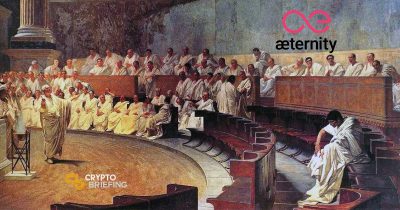Aeternity Goes Live In Roma Release

Share this article
Aeternity has released its first live implementation, bringing the new blockchain platform one step closer to providing scalable smart contracts and user-friendly oracles. The new implementation, code-named Roma, was released at a launching ceremony in Rome earlier this week.
In a press release after the launch, the aeternity team declared that developers, miners and users would now be able to interact with a live version of the network for the first time.
“After two years’ hard work, æternity has created a system that delivers on the original promise of enabling faster transactions without sacrificing rich functionality and decentralization,” said aeternity founder Yanislav Malahov. “The protocol is based on an entirely new architecture that builds on the lessons learned over the past 10 years of blockchain-focused research.”
It’s the first step towards full functionality from the project, which completed the first phase of its token migration from the Ethereum blockchain last week. Although not quite consumer-ready, the Roma implementation will allow technical users to earn AE token bounties by securing the network. Developers may begin creating dApps for the network in Sophia, the aeternity programming language.
Solving Proof of Work
This is one of several new blockchain projects seeking to scale beyond the limitations of Proof-of-Work consensus algorithms. While it’s not the only project to piggyback on Ethereum while developing a dApp platform, many of its competitors underperformed after their main net launch. While Proof-of-Stake consensus is far more resource-efficient than mining, it also has a “rich-get-richer” effect that rewards early adopters and discourages later entrants.
aeternity’s solution to those problems is a modified proof-of-work consensus algorithm. BitcoinNG, developed by researchers at Cornell University, features a “temporary leader” who is randomly chosen by PoW to verify events between blocks, effectively allowing real-time transactions without waiting for a block confirmation.
In addition, the new blockchain uses a novel PoW algorithm that is memory-intensive rather than CPU-intensive, reducing the benefits of ASIC mining. When aeternity ASICs do arrive, “hardware manufacturers will not have an advantage on creating ASICs over common users,” due to the new algorithm, aeternity claims. “No need for sophisticated GPUs and designs, no company or companies guarding the technology.”
The new consensus algorithm is one of many innovations built into the aeternity protocol, which also includes built-in oracles, allowing smart contracts and dApps that react to real-world data. DSTOQ, a Stellar DEX, has already arranged for aeternity oracles to provide information streams to users of the trading platform, as Crypto Briefing has previously reported.
The launch will allow the blockchain to develop into an independent ecosystem for decentralized applications, aeternity says. Starfleet, an accelerator for startups building on aeternity, will soon begin developing commercial applications and growing the ecosystem.
The author is invested in Ethereum, which is mentioned in this article.
Share this article
